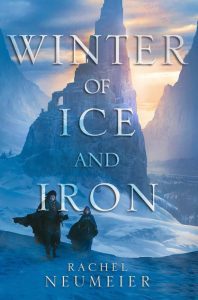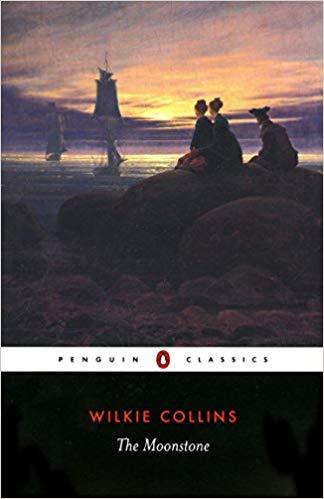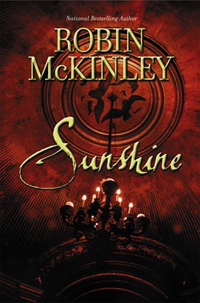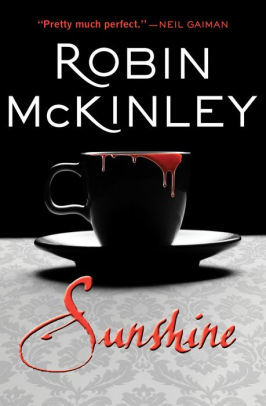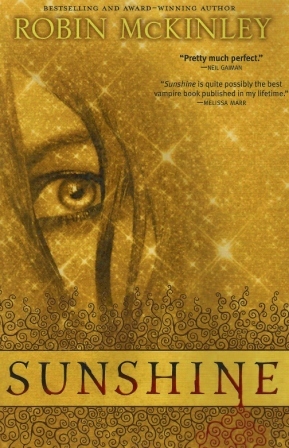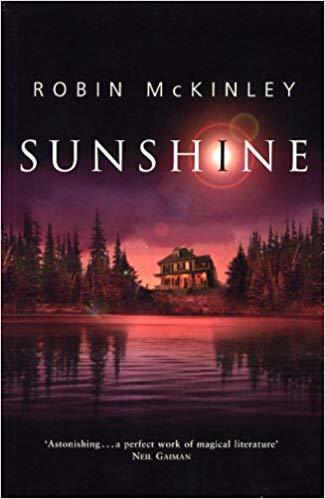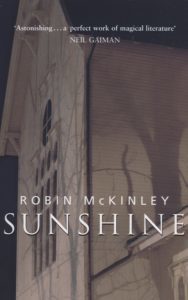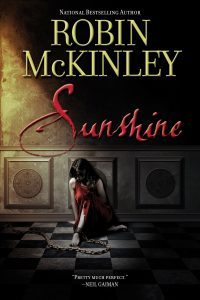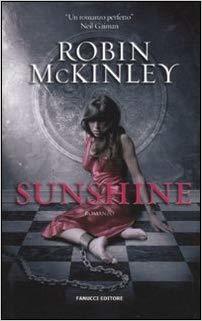Rachel Neumeier's Blog, page 222
August 15, 2018
Which Stephen King book should you read first?
I like quizzes, especially if I happen to have an opinion about the topic, so this one caught my eye: WHICH STEPHEN KING BOOK SHOULD YOU READ FIRST? TAKE THE QUIZ!
1. Pick a Hallowe’en costume: choices a, b, c, d, e
2. What are you most afraid of?
3. How do you deal with adversity?
4. What’s your favorite genre?
5. How familiar are you with Stephen King’s work?
(I will add that I am apparently never going to be familiar enough with Stephen King to remember how he spells his name without looking. But that’s just me.)
6. How do you feel about 1000-age books?
Here is what the quiz recommended for me:
Go for one of King’s newer works. 11/22/63 is an alternate history sci-fi time travel novel about a man trying to go back in time to prevent JFK’s assassination.
My response: Amazingly enough, I have never heard of that book. Here it is on Amazon.
Here is what Amazon says about it:
On November 22, 1963, three shots rang out in Dallas, President Kennedy died, and the world changed. What if you could change it back? Stephen King’s heart-stoppingly dramatic new novel is about a man who travels back in time to prevent the JFK assassination—a thousand page tour de force.
As it happens, I don’t much care for time travel as a plot element. In general my kneejerk reaction is to look away from a book in which time travel is a thing. Then sometimes I overcome that reaction and read the book and like it a lot, or at least pretty well. That’s just my first reaction.
On top of not really liking time travel very much, I am specifically not interested in the JFK assassination thing. So, nope, this quiz was a failure for me.
As it happens, I liked some of King’s classics best, including It despite a very weak ending. I mostly dislike his more recent work, in which he seems to invariably insert a likable female character for the purpose of jerking the reader’s tears by killing her, no matter how he has to contort the plot to insert that death.
I liked Rose Maddar. That may be the most recent of King’s books I actually liked. That one first came out back in 1995. Let me look at his bibliography — oh, I forgot about The Green Mile. I liked that one a lot. It was published nearly at the same time — 1996.
I read Duma Key. Dead female character, contorted plot to make that happen. I haven’t read anything by King since.
Looking at that bibliography, though, there sure are a lot of his books I haven’t read. Wow.
My least favorite was Cujo. I wonder if you could take that quiz in such a way as to kick that up as a recommendation? Or maybe everyone dislikes it, including the people who wrote the quiz. For me, it’s not that the antagonist is a rabid dog, though naturally that is not my favorite idea ever. It’s that the protagonist is such a dimwitted, ineffectual lightweight twit. I could perfectly well kill a rabid St Bernard, and I am neither young nor big. I kept thinking of ways she could do it, and she kept not doing it.
Twit.
Please Feel Free to Share:









August 14, 2018
Is my novel too long?
For self-publishing, no.
For traditional publishing, maybe.
Here is a tidbit from Janet Reid’s blog:
A nice young man in cheerful blue print shirt sat down and although I forget the question he started with, the problem was that his novel was 274,000 words. And no, it couldn’t be cut. Not at all. Plus, an editor read it, and she loved it. A lot. Not an editor from a publisher that acquired his genre (fantasy) sadly.
You know what I said: it’s too long.
But but he spluttered, this editor doesn’t think so! She loved it!
I explained that the reason it was too long had nothing to do with love; it was all about money. It would cost more to print a book that long, and a debut trade paperback novel priced at $30 was a dealbreaker for most publishers who profess to want to turn a profit.
He literally could not hear what I was saying.
He said goodbye, and thank you (he was a nice guy!) and off he went.
Several more people came and went than another lovely lady sat down, and I squinted a bit; she looked familiar. “How do we know each other?” I asked.
“I met you here last year, and you told me my novel was too long.”
Now this can go one of two ways. I have been known to tell writers that if they discover my advice was wrong (usually about how to pitch something) they should email me and tell me “neener neener.” After all, unchecked, I will continue to think I’m right 100% of the time.
“How long was it?” I asked, with trepidation.
“274,000 words.”
ZOUNDS!
“I spent the last year cutting it down to 175,000 words,” she continued. “I don’t have question, I want to thank you. Telling me to cut was the best and hardest advice I got at the conference.”
Whew!
Well, that certainly does sound extremely long. My very longest is 194,000 words — but it was not that long when the editor gave it a thumb’s up. It kept going up during revisions and she kept not minding . . . and of course it was not my debut novel, which probably helped.
I wonder if the first person with the long book might be able to break it into two self-contained books in a duology. That might be a way around this issue.
Janet winds up this post by asking, “What is the hardest advice you ever got that wound up helping you?” So click through and read the comments if you are interested.
Right now all editing seems like a piece of cake to me, including cutting a manuscript by 50%. That will change in a few days, I expect, when I finally finish this dratted manuscript and have the full rough draft DONE. It’s amazing how writing a new book seems hard when you’re editing, and editing seems hard when you’re working on a first draft …
Please Feel Free to Share:









August 13, 2018
If you encounter a centaur having a heart attack
Then you will be glad to know this: Two Doctors Figured Out How To Treat A Centaur Having a Heart Attack
Serious question for #medtwitter: If you show up at a code, and the patient is a centaur who had a cardiac arrest, ignoring the joules question, where do you think the defib pads should go? A, assuming the heart is in the human part, or B, assuming the heart is in the horse part?
It seems doubtful a human-sized heart could maintain adequate circulation for a centaur body. My money would be on the heart being in the horse chest. Although maybe the human chest contains an accessory heart. Like in a hagfish.
Of course, just like in a hagfish!
Neat twitter thread, click through and read it if you have a moment.
Speaking of medical issues in centaurs, let me call out Nick O’Donohoe’s wonderful The Magic and the Healing. The details of medicine are veterinary approved — my vet at the time borrowed the book from me and gave it a thumb’s up.
Tip: do not look at the current cover image for this book. It is dreadful. Instead, enjoy the original cover:
Please Feel Free to Share:









When an author can’t tell a protagonist is evil
So, in between casually reading a couple of historicals, I have been poking around in my library, re-reading this and that. Books I don’t expect to get caught up in, the sort of thing I can read a little bit of and put down again, or skim through lightly. This category mostly includes books I have read a lot of times, or books I like but not that much (these categories are not mutually exclusive.)
At the moment, that means I have been re-reading the Telzey Amberdon stories by James Schmidt.
They are kind of fun. I see why I liked them when I was a teenager. I still like them, sort of. But I sure do wonder whether Schmidt realized, while he was writing these stories, what a really awful person his protagonist is.
If you haven’t read them, or if you have forgotten, let me remind you that Telzey, who is fifteen when the stories begin, is a psi. She’s a telepath. She is, in fact, a telepath who can quite easily read most minds, control them, make people forget things, insert false memories, and – here is the kicker – permanently alter their personalities. Which she does rather freely if she doesn’t happen to like someone; for example, the aunt with whom she is staying in the first of the stories. Yes, this aunt is unpleasant. Nevertheless, changing her personality so that she is nicer is, not to mince words, actually evil.
Telzey can crush someone’s mind and turn him into a vegetable. She does this to a bad guy in one of the stories. Yes, he is a bad guy. Yes, he tried to kill Telzey. Still, I can’t help but feel she was pretty casual about destroying his mind. Just how bad would a guy have to be before Telzey would feel she had the right to destroy his mind? From her casual manipulation and control of various others throughout the stories, I can’t help but feel it might not take very much for her. She might feel a little bad about it afterwards, but I’m sure she’d get over it. She sure doesn’t dwell on the liberties she takes with anybody’s mind.
Oh, she’s also a genius and pretty. A fan club of boys orbits her, but she has them well trained so they aren’t too annoying. [Insert eye roll here.]
Now, how common is it, do you think, for authors to kind of miss the fact that the protagonist they have created is actually not at all nice and possibly evil? I am not talking about morally ambiguous characters where the author purposefully created the ambiguity, like Janus in The Thousand Names or, say, Hugh d’Ambray now that he’s been re-interpreted as a better person. Or, or for that matter, Innisth in Winter of Ice and Iron. That kind of moral ambiguity is everywhere and mostly it’s a very good thing, adding depth and complexity to the story.
No, I am talking about characters the author apparently thinks are good people, who are actually bad people.
I can think of a couple other arguable cases.
How about Camber of Culdi?
In tough times, sometimes you have to get tough. Manipulate people, lie to them – or be a bit selective with the truth, let’s say. Force them into lives they hate, murder the odd person who stumbles onto your secrets, take the place of a dead friend for a few years and lie to everyone about who you are, that kind of thing. Oh, and also Camber is another telepath who has no trouble fiddling around with people’s memories. After all, it’s totally for their own good. Can’t make an omelet without breaking eggs. If the omelet is important, you can righteously do practically anything to get that sucker made. We sure see this attitude in real life, but it does not make for an actually righteous protagonist; rather the reverse. For self-righteously manipulating everyone around him, it’s hard to do better than Camber.
Is it possible to write a telepath who is a good person? Probably. Drop examples in the comments, please, because I’m blanking on that category.
I’m not sure I can think of another really unpleasant protagonist whom the author thinks is a good person. But I can easily think of an entire society that seems to be exactly that way.
The Black Dagger Brotherhood series by J R Ward is a “closed world” paranormal series. Vampires exist but the human world is unaware of this. The stories are romances, with one of the Brotherhood vampires being fixed up with a woman in each book, generally with relatively little plot given the length of the books. They’re quite readable stories, some more than others.
And, when I read the first eight or nine or whatever, I got the very powerful feeling that J R Ward has not realized what an absolutely repulsive society she has given her vampires. Every single aspect of their society goes beyond problematic to unspeakable.
The women are essentially property. They are so helpless and delicate and they have to be protected, and we wouldn’t want them worrying their delicate little minds with anything important. They live sequestered lives and their fathers or other male guardians decide who they will marry.
The men hardly have it better. Vampires train their soldiers in an incredibly abusive way that would not, by the way, be at all effective in creating competent soldiers. It’s great at making men into rage-filled psychos, though.
Astoundingly, this social system is not working out well for vampires, who are on the verge of dying out. I can’t help but wonder if that would be such a bad thing. I mean, sure, the official bad guys are sort of demonic, but still. Speaking as a normal human, I think the objectively best outcome of the series would be for the whole lot to wipe each other out completely.
Especially since vampires have another species they use as servitors. These servitors are happy happy happy to be of use, thus freeing vampires from the drudgery of making their own supper or doing their own dishes. The Golden Retrievers of sentient species, except that what is charming and sweet and appropriate in a dog is horrible in a species of happy slaves. If there were no more vampires, maybe those people could find their range of options expanding a trifle. It would certainly be worth a try.
… And I’m out. I can’t think of another example. How about you all? Either for telepaths who have the ability to control minds but are actually good people, or for books where the author seems to think their protagonist is a good person even though the evidence suggests the opposite?
Please Feel Free to Share:









August 10, 2018
Eight novel beginnings
I have somehow not really been in the mood for fantasy or SFF lately … well, I know why: it’s because I’m trying to finish a novel of my own and I don’t need the distraction of someone else’s secondary world. That is probably why I have been inclined much more to murder mysteries and historicals and occasional romances all summer, with the exception of recent releases in SFF worlds I’m already familiar with, such as Ilona Andrews’ Magic and Iron and Martha Wells’ third Murderbot novella and Liz Williams’ Inspector Chen novels.
Except for familiar SFF, I’m adding those books to my TBR pile, but I’m not reading them. Instead, I started a historical last night, one I’ve had on my TBR pile for a year or two. It seems okay – just about right for what I want at the moment – it’s by Lawrence Durrell. I’ve never read anything by Lawrence Durrell, but I know he was very highly regarded. When I was a kid, I read the delightful books by his brother Gerald Durrell, like A Zoo in my Luggage and all those. I have my doubts (perhaps unfairly) that I would like Lawrence Durrell’s most famous books, like the Alexandria Quartet, but this book is a WWII thriller, so that sounds much more approachable.
Let me show it to you, along with seven other historical novels I have lined up:
1. White Eagles Over Serbia, Lawrence Durrell, 1957
Though Methuen usually lived at his Club whenever he was in London it was seldom that he was seen in the bar or the gaunt smoking-rooms. This afternoon in June was something of an exception – and he surprised himself when he found that he was crossing the marble staircase by the porter’s lodge, to push open the swing doors which opened on the private lounge. He was in search of congenial company, he told himself, and added under his breath, “And I am not feeling very particular.” Four months in the jungles of Malaya had starved him for the sound of his own language and he was glad – yes, glad – to catch sight of old Archdale, the bore of bores, in one corner of the room.
I read a chapter or two of this one last night. It seems to be just the ticket for giving me something to read for the next week or so, while I try to knock out Chapter 23 of my current WIP and figure out whether there is going to be a Chapter 24 as well, or whether from Chapter 23 I can head straight to the dénouement. Since White Eagles is a WWII novel, it’s going to have plenty of tension, but I imagine the good guys will win. Meanwhile, the writing is smooth and good without calling attention to itself. Don’t you like the phrase “gaunt smoking-rooms”?
2. The Moonstone, by Wilkie Collins, 1868 (you see why I felt I had better include the year of publication for this list of books. Wow. A hundred and fifty years.)
I address these lines – written in India – to my relatives in England.
My object is to explain the motive which has induced me to refuse the right hand of friendship to my cousin, John Herncastle. The reserve which I have hitherto maintained in this matter has been misinterpreted by members of my family whose good opinion I cannot consent to forfeit. I request them to suspend their decision until they have read my narrative. And I declare, on my word of honour, that what I am now about to write, is strictly and literally, the truth.
The private difference between my cousin and me took its rise in a great public event in which we were both concerned – the storming of Seringapatam, under General Baird, on the 4th of May, 1799.
I am actually about half through The Moonstone, a book that I find quite readable but not precisely un-put-downable. I have been reading bits of it for . . . I believe it has been over a year since I started it. I haven’t actually stopped, but its extremely mannered prose does not make super-compelling reading. Also, I have reached the point where the Moonstone has vanished and a young woman seems to be acting like a complete idiot about it. Complete idiots are not appealing to me, so this part is veeeery slow to get through. But I should definitely finish this book this year, because at 150 years old exactly, this is obviously the right year to read it.
3. Mansfield Park Revisited, by Joan Aiken, 2008
The sudden and unexpected death of Sir Thomas Bertram, while abroad engaged on business relating to his various properties in the West Indies, could be a cause of nothing but sorrow, dismay, and consternation to the baronet’s friends in England. A just administrator, an affectionate parent, a devoted husband, and respected neighbor in the county of Northamptonshire where he resided, Sir Thomas must be missed sincerely by all; yet his nearest family were left in particular and extreme distress, since in so many matters his word had been accepted as final authority; without its head, his household hardly knew how to go on, or how to resolve the innumerable difficulties and perplexities which his loss had occasioned, yet which only he, it seemed, could resolve.
Like most people, I wouldn’t pick Mansfield Park as my favorite, but I am curious to see what Joan Aiken has done with it. By the way, that second sentence is eighty-six words long, in case you wondered.
4. Pavilion of Women, by Pearl Buck, 1946
It was her fortieth birthday. Madame Wu sat before the tilted mirror of her toilet case and looked at her own calm face. In her mind she was comparing it with the face she had seen in this same mirror when she was sixteen. On that day she had risen from her marriage bed early, for she had always been an early riser, and putting on her new chamber robe, she had come into this same room and had taken her place before the toilet table. She had sat in her quiet fasion, easily motionless, and had gazed at her young face.
“Can it be that I look the same today as yesterday?” she had asked herself on that first morning after her marriage.
I have read several books by Pearl Buck. She was such a good writer. As you can see, this is one of her China novels.
5. Return to Night, by Mary Renault, 1947
The cocks were crowing in the cool glassy darkness before the dawn. Their cry, thinned by long silent distances, crept faintly through the early chill; ghostly, menacing, full of danger and of promise. From the gray tower halfway up the hillside, the clock of a village church struck five.
Hilary pulled off her white coat, saw that it was splashed with blood, and tossed it into a corner of the floor. On second thoughts, she stirred it with her foot till the bloodstain came uppermost. This, she hoped, might indicate to someone that she did not want to see I again on her next call.
Mary Renault of course wrote the wonderful The King Must Die. I haven’t been so very keen on anything else of hers that I’ve tried, but I will try this novel and we’ll see. The blood stain is because the protagonist is a doctor, incidentally. This is probably not a thriller. That first paragraph is beautiful. Maybe the writing will keep me going if this turns out to be an angsty romance type of thing.
6. The Sinai Tapestry, by Edward Whittemore, 1977
The Arabic Jew, or Jewish Arab, who owned the entire Middle East at the turn of the century passed his early life exactly has had his English forebears for six hundred and fifty years. At the family estate in southern England he was taught to care for flowers, especially roses. His parents died while he was young and his aunts and uncles moved into the manor to raise him. In due time he would receive his title and become the twenty-ninth Plantagenet Strongbow to bear it, merely one more Duke of Dorset.
I picked up the Sinai Tapestry quartet when it was free a year or two or three ago. I’m not sure what I think of this beginning. The next few paragraphs describe the ridiculous ways in which various parents in this family have died, leaving their children to be brought up by their various uncles and aunts. It’s a bit strange, rather darkly humorous, and so far I have absolutely no idea how “the Arabic Jew” ties into what seems to be a mannered British family.
7. Cranford, by Elizabeth Cleghorn Gaskell, 1853, so here’s another really old one.
In the first place, Cranford is in possession of the Amazons; all the holders of houses above a certain rent are women. If a married couple come to settle in the town, somehow the gentleman disappears; he is either fairly frightened to death by being the only man in the Cranford evening parties, or he is accounted for by being with his regiment, his ship, or closely engaged in business all the week in the great neighboring commercial town of Drumble, distant only twenty miles on a railroad. In short, whatever does become of the gentlemen, they are not at Cranford. The surgeon has his round of thirty miles, and sleeps at Cranford; but every man cannot be a surgeon.
For keeping the trim gardens full of choice flowers without a weed to speck them; for frightening away little boys who look wistfully at the said flowers through the railings; for rushing out at the geese that occasionally venture in to the gardens if the gates are left open; for deciding all questions of literature and politics without troubling themselves with unnecessary reasons or arguments; for obtaining clear and correct knowledge of everybody’s affairs in the parish; for keeping their neat maid-servants in admirable order; for kindness (somewhat dictatorial) to the poor, and real tender good offices to each other whenever they are in distress, the ladies of Cranford are quite sufficient.
Lovely writing. If you’re keeping track, that second paragraph, which is all one sentence, is one hundred and twelve words.
8. Rondo Allegro, by Sherwood Smith, 2014
As the eighteenth century drew to a close, it seemed that all the European world was at war.
A newly widowed woman peered out the rain-streaked windows in hopes that the post had brought a letter from her younger son, which never came; a boy shivered on the deck of a sloop-of-war, sobbing silently in fear and loss as voices shouted in an incomprehensible language around him; a girl walked out of the cook shop where she had been bound, and made up a new name by the time she reached the crossroads.
All three will be met with, one by one, but my story really begins on a simmering June day in Palermo, Sicily, 1799, as two men stood in an archway under carvings of laughing demons. They gazed out at a young lady, each man with very different thoughts.
Okay, of these eight, I believe I find Sherwood Smith’s the most compelling, possibly because she is writing for modern tastes. Don’t you want to know about the woman with the son, the poor boy on the ship, and perhaps most of all that girl who walked out of the cook shop?
A lot of these are appealing, regardless of whether they are compelling in the gotta-turn-the-page sense. All of them look like they’re going to have just beautiful writing, as perhaps one might expect for the older ones given they’re still being read 150 years, or even a mere 70 years, after their first publication. Stylistically, as I said, I am not all that engaged by The Moonstone. The skillful writing is what keeps me coming back to it.
What do you all think of these?
Please Feel Free to Share:









Death of Marat
These comments about Sunshine from recent posts, especially Pete Mack’s perspicacious comment about the Death of Marat being one component of a perfect cover for the book, made me remember that I have always kinda wanted to try to create a Death of Marat type of dessert. So I finally took a stab at that this morning.
This was not a complete success. I mean, the dessert – redefined here as a breakfast item – was very good and I will no doubt make it again, probably tomorrow. But it was neither as white and innocent looking as I might have liked, nor can I quite see how to get the filling to “explode” out of the dish when a spoon is poked into it. In this case, the filling was certainly completely passive and non-explosive.
Here is how it is described in the book:
I’d made this light fluffy looking number in a white oval dish with white high sides and presented the first one with a flourish to a group of regulars who had volunteered to be experimented on. Aimil was the one with the knife, and she stuck it in and the raspberry-and-black-currant filling had exploded down the side and over the edge of the dish onto the counter…
So you see how the explosiveness is obviously important.
Here is how my version looked on coming out of the oven:
This is a perfectly nice soufflé, sure. But that golden top, is that okay for a Death of Marat? Opinions? If you made this a chocolate soufflé, that would not be an issue. But on the other hand, do you envision a chocolate dessert from Sunshine’s description? Or from the titular name? I feel it should be vanilla.
The basic recipe is from Richard Sax’s Classic Home Desserts. I modified it by using a plum filling (I had that in the freezer). I used a lot more filling than his recipe suggests, and I left out the cream because I happened to have used up the last of the cream yesterday (or I would certainly have included it). I also made 1/3 of the topping because I wanted just one serving.
Sax was not thinking about Sunshine’s Death of Marat and so didn’t use an appropriate filling. So after I give his recipe, I’m also going to suggest a more suitable filling that was created by another Sunshine fan, though I haven’t tried this filling myself.
Salzburg Little Mountain Soufflés, from Richard Sax’s Classic Home Desserts
4 Tbsp heavy cream (I was out of cream)
4 tsp black currant or other preserves (I used far more plum filling)
4 tsp butter (I left this out)
6 large egg whites
¼ C sugar
1 tsp vanilla
Zest and juice of one lemon (I left this out)
3 large egg yolks
¼ C flour
(I cut all the soufflé ingredients to roughly 1/3 of the amounts given, plus I left out the lemon juice and zest)
Get four ramekins or 7-oz gratin dishes or some such items. Or use one 10- to 12-oz gratin dish.
Put 1 Tbsp cream, 1 tsp preserves, and 1 tsp butter in each ramekin.
Beat the egg whites until soft peaks form. Gradually add the sugar and vanilla, lemon juice, and lemon zest. Beat until stiff and shiny. Gently fold in the egg yolks and flour. Top the ramekins with this soufflé mixture. Bake at 450 degrees for 8 minutes, until puffed and golden.
Now, I must say, this soufflé was really good. Sax describes it as melting and unctuous. That is correct. Mmm. I used about 2 Tbsp of filling, or about eight times as much as suggested, but of course I did leave out the cream and butter. I did not feel this was too much filling for the amount of topping, which was 1/3 of the soufflé recipe above.
Now, here is a raspberry and black currant filling for a more authentic Death of Marat experience:
6 oz black currant preserves
6 oz raspberries
1/3 C sugar
3 Tbsp cornstarch
1 tsp lemon juice
Add enough water to the currant preserves to make 1¼ C. Add the rest of the ingredients, Bring to a simmer and cook until thickened. Cool until you’re ready to use it.
I didn’t invent this filling, by the way, but the site where I got it from another Sunshine fan seems to have vanished. Fortunately I had copied it before that, so here it is.
If you are going to make an individual cobbler with filling you made ahead and chilled, I suggest you put the filling in the ramekin and then microwave it till it’s hot to make sure the bottom of the topping bakes though properly. I think this is important for a biscuit topping, but I’m not sure for a soufflé topping.
Either way, how can you get the filling to burst out of the soufflé when you poke it?
Maybe if you put some of the soufflé in the ramekin first, then the filling kind of near the top, then the rest of the soufflé? Would the filling sink too much or compress the soufflé? Maybe if you layered filling, soufflé, rest of the filling, rest of the soufflé?
Plainly this is something to experiment with. If you try different variations, let the rest of us know how they work out!
Please Feel Free to Share:









Death of Merat
These comments about Sunshine from recent posts, especially Pete Mack’s perspicacious comment about the Death of Merat being one component of a perfect cover for the book, made me remember that I have always kinda wanted to try to create a Death of Merat type of dessert. So I finally took a stab at that this morning.
This was not a complete success. I mean, the dessert – redefined here as a breakfast item – was very good and I will no doubt make it again, probably tomorrow. But it was neither as white and innocent looking as I might have liked, nor can I quite see how to get the filling to “explode” out of the dish when a spoon is poked into it. In this case, the filling was certainly completely passive and non-explosive.
Here is how it is described in the book:
I’d made this light fluffy looking number in a white oval dish with white high sides and presented the first one with a flourish to a group of regulars who had volunteered to be experimented on. Aimil was the one with the knife, and she stuck it in and the raspberry-and-black-currant filling had exploded down the side and over the edge of the dish onto the counter…
So you see how the explosiveness is obviously important.
Here is how my version looked on coming out of the oven:
This is a perfectly nice soufflé, sure. But that golden top, is that okay for a Death of Merat? Opinions? If you made this a chocolate soufflé, that would not be an issue. But on the other hand, do you envision a chocolate dessert from Sunshine’s description? Or from the titular name? I feel it should be vanilla.
The basic recipe is from Richard Sax’s Classic Home Desserts. I modified it by using a plum filling (I had that in the freezer). I used a lot more filling than his recipe suggests, and I left out the cream because I happened to have used up the last of the cream yesterday (or I would certainly have included it). I also made 1/3 of the topping because I wanted just one serving.
Sax was not thinking about Sunshine’s Death of Merat and so didn’t use an appropriate filling. So after I give his recipe, I’m also going to suggest a more suitable filling that was created by another Sunshine fan, though I haven’t tried this filling myself.
Salzburg Little Mountain Soufflés, from Richard Sax’s Classic Home Desserts
4 Tbsp heavy cream (I was out of cream)
4 tsp black currant or other preserves (I used far more plum filling)
4 tsp butter (I left this out)
6 large egg whites
¼ C sugar
1 tsp vanilla
Zest and juice of one lemon (I left this out)
3 large egg yolks
¼ C flour
(I cut all the soufflé ingredients to roughly 1/3 of the amounts given, plus I left out the lemon juice and zest)
Get four ramekins or 7-oz gratin dishes or some such items. Or use one 10- to 12-oz gratin dish.
Put 1 Tbsp cream, 1 tsp preserves, and 1 tsp butter in each ramekin.
Beat the egg whites until soft peaks form. Gradually add the sugar and vanilla, lemon juice, and lemon zest. Beat until stiff and shiny. Gently fold in the egg yolks and flour. Top the ramekins with this soufflé mixture. Bake at 450 degrees for 8 minutes, until puffed and golden.
Now, I must say, this soufflé was really good. Sax describes it as melting and unctuous. That is correct. Mmm. I used about 2 Tbsp of filling, or about eight times as much as suggested, but of course I did leave out the cream and butter. I did not feel this was too much filling for the amount of topping, which was 1/3 of the soufflé recipe above.
Now, here is a raspberry and black currant filling for a more authentic Death of Merat experience:
6 oz black currant preserves
6 oz raspberries
1/3 C sugar
3 Tbsp cornstarch
1 tsp lemon juice
Add enough water to the currant preserves to make 1¼ C. Add the rest of the ingredients, Bring to a simmer and cook until thickened. Cool until you’re ready to use it.
I didn’t invent this filling, by the way, but the site where I got it from another Sunshine fan seems to have vanished. Fortunately I had copied it before that, so here it is.
If you are going to make an individual cobbler with filling you made ahead and chilled, I suggest you put the filling in the ramekin and then microwave it till it’s hot to make sure the bottom of the topping bakes though properly. I think this is important for a biscuit topping, but I’m not sure for a soufflé topping.
Either way, how can you get the filling to burst out of the soufflé when you poke it?
Maybe if you put some of the soufflé in the ramekin first, then the filling kind of near the top, then the rest of the soufflé? Would the filling sink too much or compress the soufflé? Maybe if you layered filling, soufflé, rest of the filling, rest of the soufflé?
Plainly this is something to experiment with. If you try different variations, let the rest of us know how they work out!
Please Feel Free to Share:









August 8, 2018
Rhythmic gymnastics
Have you ever seen this?
It is a type of gymnastics with a ball … or ribbons
Or batons
or a hoop
It’s like a combination of gymnastics and dance, with props. Very beautiful and impressive. This was on television in the Barcelona airport, which is the first time I’d ever heard of it. I’m glad I finally remembered to look it up so I could watch some performances properly.
Please Feel Free to Share:









Rythmic gymnastics
Have you ever seen this?
It is a type of gymnastics with a ball … or ribbons
Or batons
or a hoop
It’s like a combination of gymnastics and dance, with props. Very beautiful and impressive. This was on television in the Barcelona airport, which is the first time I’d ever heard of it. I’m glad I finally remembered to look it up so I could watch some performances properly.
Please Feel Free to Share:









Covers for McKinley’s Sunshine
Here is the chandelier cover referenced in the comments to the last post:
I like it okay, but to me it hardly has any more relevance to the story than the cup of blood:
Here is a YELLOW cover that mainly strikes me as YELLOW. It does not seem the least bit connected to the story. Sure, there’s a girl, but she could be anybody. Mostly it is just YELLOW.
Here is a haunted house that is related to the opening scene, but does not actually suit the story any better than the others:
Here is a remarkably monochrome cover:
Here is the one I think best expresses the story, though still it completely ignores the bakery and feeding-people-you-love aspects:
A variation on that theme:
I don’t know what scene I would choose to illustrate for the perfect Sunshine cover. I don’t really agree with all these cover artists that the book is truly horror — I think I would call it dark fantasy — so the haunted house covers and especially the cup of blood don’t fit. How would you combine baking with vampires? Tricky, which is I suppose why no one has yet attempted that combination.
Anyway, which cover do you like best as a cover for a horror novel, not necessarily Sunshine? And which do you think actually fits Sunshine, if any?
Please Feel Free to Share:










